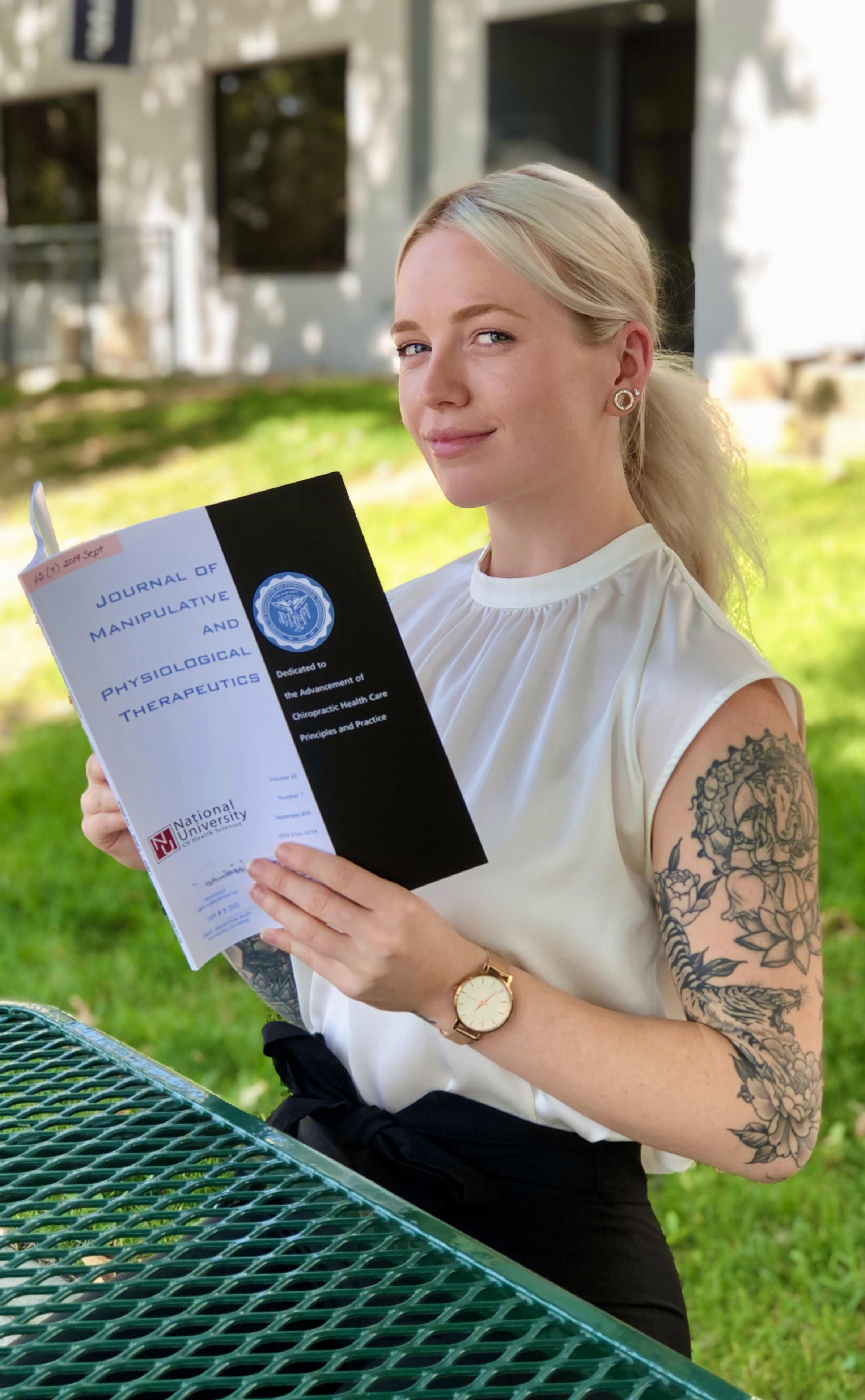
4 minute read
Why Research?
"PRIMUM NON NOCERE" - FIRST, DO NO HARM. ALL CHIROPRACTORS SHOULD STRIVE TO ABIDE BY THIS DICTUM, REGARDLESS OF THEIR SCOPE OF PRACTICE.
- By Alexis Griffith -
Advertisement
One way in which we can assure that we do no harm and have patients’ best interests in mind is through evidenceinformed, patient-centered practice guidelines, which are a result of critical thinking, rational discussion and scientific research. Regardless of personal viewpoints, research and current literature awareness not only have a rightful place in our practice, but a non-negotiable one at that.
Scientific inquiry is the basis from which all understanding of the universe has been acquired. It is how we have continuously discovered answers to things unknown, all the while filling our gaps in knowledge and challenging the ways in which we think. We’re all familiar with the classic example of Copernicus’ Heliocentric Theory. In the 16th century, astronomer Nicolaus Copernicus proposed that the Earth and other planets orbit the Sun, instead of the other way around. Had this never been discovered, life may not have been very different. But the discovery of the true nature of our solar system led to further inquiry and discovery, resulting in the advancement and accuracy of what we currently know about the universe and its governing laws. Why should healthcare research, namely chiropractic research, be any different?
An evidence-informed approach is simply that. Evidence-informed. This means that the current best evidence is utilized consciously and responsibly in the assessment and decision-making regarding individual patients and their personalized care. It should not, however, be assumed that best empirical evidence is the only important aspect when approaching patient treatment. Clinical knowledge and expertise, understanding patient values and experiences, and developing solid relationships with patients that are based on mutual respect are all vital elements to what is known as the Evidence Informed Practice Model. It takes what we know clinically from empirical evidence and puts the patient at the center of care by emphasizing outcome markers that matter directly to them. Will the patient actually get out of pain and back to their daily activities and passions? Will the treatment plan meet this person where they are and positively affect their outlook and quality of life? This is called patient-centered care and, along with evidence informed practice, strives to ensure the most clinical efficacy possible.
The opposite of patient-centered care is doctorcentered care, in which patients are viewed the same and treated the same due to the false belief that there is only one cause of their problems and only one way to help them. For example, a physician that does not have a patient-centered approach would treat 10 different patients with 10 different conditions the same exact way. This is a result of clinging to traditional
approaches and disregarding the literature that proves otherwise.
An evidence-informed approach also helps to ensure life long learning. While adhering to and being confident in traditional approaches isn’t inherently bad, being certain in those approaches to the point of disregarding contradictory information is what can become detrimental to an efficacious practice. Certainty is the enemy of curiosity, and research is essentially curiosity in practice.
Another barrier that chiropractors and students face when trying to stay up to date on current research and guidelines is that they just don’t know where to look or where to start, which can be very discouraging. Firstly, there are some great websites with detailed condition references and template treatment plans. Our health center interns have access to ChiroUp, an amazing evidence-based resource, and there is also Physio Network and OMT Training with similar resources for free. The latter two are technically physical therapy and osteopathic resources, respectively, but contain invaluable information nonetheless. Podcasts are another great way to stay up to date and gain new perspectives, with The Evidence Based Chiropractor and The Gestalt Education Show being my current personal favorites. These specific podcasts share great chiropractic research as well as practice management tips. For those of us with a little more time on our hands, there are great textbook resources as well. Of course, there’s Souza’s Differential Diagnosis and Management for the Chiropractor, but I recommend Dr. Nikita Vizniak’s Clinical Chiropractic and Orthopedic Conditions as condition reference manuals as well as his entire line of textbooks for additional information. There are also amazing texts by Dr. Stuart McGill, an expert in spinal biomechanics and low back pain, Dr. Craig Liebenson on rehabilitation of the spine, as well as David Butler’s Explain Pain, which explains the physiology of the pain experience. Another overlooked resourced that students have is free access to scientific journal articles through Life West’s online database, but literature searches and analyses can be daunting, especially when not properly educated in research literacy.
These are just a few suggestions to get prospective learners started on the road to literature competency and will have a substantial impact on your approach to and treatment of various conditions that you will inevitably be exposed to as a chiropractor. Remember that while research can be intimidating and will challenge your biases and preconceived notions, it is through research and evidence-informed practice that we can truly evolve our understanding of what we do as chiropractors and practice with our patient’s best interest in mind. This isn’t to say that research and evidence are the be-all-end-all, as clinical knowledge and patient values are just as important. But it should be known that research has a place in healthcare, while ego and bias do not, and we should all exercise our due diligence in providing the most correct information and efficacious care to our patients. §






